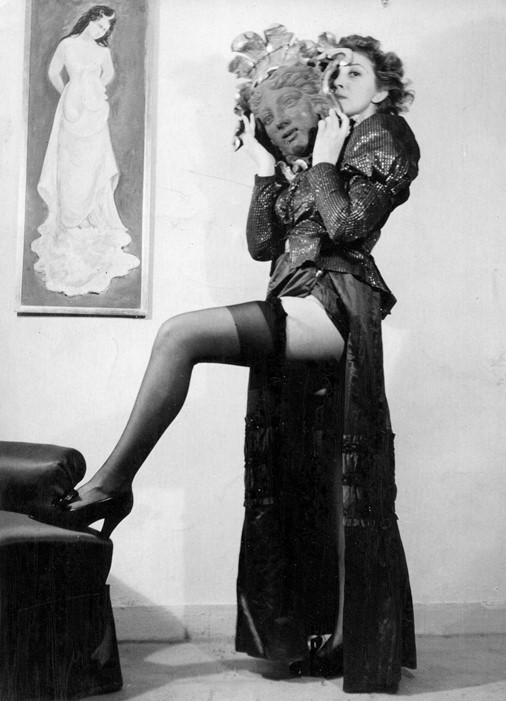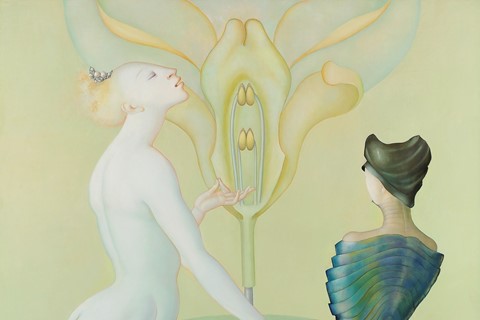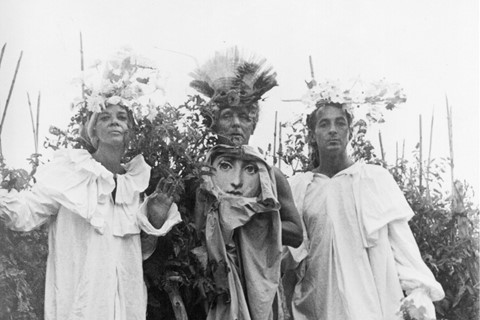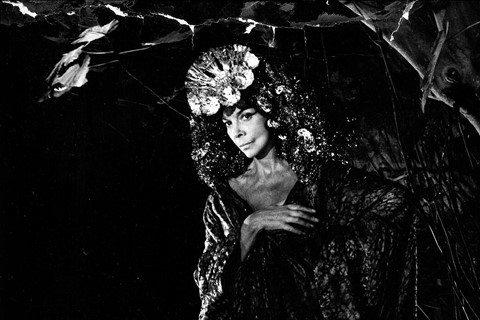The New York Museum of Sex is celebrating the daring and empowered work of Leonor Fini
Leonor Fini possessed an avid taste for the dramatic. As she once declared, “I have always loved, and lived, my own theatre.” From her groundbreaking paintings to her vivid – and visually compelling – character, Fini visibly relished standing apart. Now the subject of an extensive exhibition at the New York Museum of Sex, with numerous artworks, artifacts and photos on display, Fini makes for yet another 20th-century female artist finally being paid some much overdue attention.
Born in Buenos Aires in 1907, Fini grew up in Trieste. Her parents’ separation was fraught, Fini’s mother disguising her daughter in boy’s clothes for several years after a failed kidnap attempt from her father. She was headstrong and sharp: expelled from three schools, reading voraciously (with the run of her uncle’s library), and initially teaching herself painting partly by observing the anatomy of cadavers in the local morgue. Fini’s interest in the bodily would run throughout her work, continually shaping the themes and preoccupations of her output.
Recognised for both her eye and artistic skill from a young age, in her early twenties she took off to Paris, moving easily into the midst of a thriving artistic movement. Although refusing to ever formally align herself with the Surrealists – too singular for one group’s thoughts and aims, as well as too suspicious of André Breton’s rampant misogyny (manifested in his odious belief in women’s status as passive muses rather than active creators) – Fini still socialised with and exhibited alongside leading writers, painters and photographers including Salvador Dalí, Paul Eluard, Man Ray, Dora Maar and Max Ernst.
Seminal Moments
Fini’s paintings are remarkable to observe. By turns fantastical and dark, they repeatedly dwell on mortality, eroticism, dreams, and destruction. Women are crowned with bird’s skulls, or pose boldly encased in armour. Languid men lie sleeping. An angel stands stark, skin stripped back to reveal muscle and bone beneath. Repeatedly playing with different iterations of gender, Fini regularly rendered female figures as priestesses, witches, and, above all, sphinxes: the intricacies of womanhood explored via myth and mutability. Often depicted in stances of dominance, their contrast with her portraits of men – often, as she claimed, “unthreatening” and “of ambiguous sexuality” – makes for a fascinating revision of power, gaze, and approaches to muse-hood.
Elsewhere Fini’s talents stretched in a rich set of directions: including erotic illustrations to accompany editions of Marquis de Sade’s Juliette and Anne Desclos’ Histoire d’O, dazzling sets and costumes for a wide variety of theatres, ballet companies and films (including Fellini’s 8 ½), writing (she authored three novels), and design from furniture to fashion collaborations – in the case of the latter, devising the famous bottle to hold Elsa Schiaparelli’s perfume Shocking, modelled on Mae West’s torso.
Away from her creative endeavours, Fini also forged an unconventional personal life. Openly bisexual and non-monogamous, she often lived with a ménage of partners and Persian cats – eventually accumulating 17 feline companions. As she later reflected, “since I was 18 I have preferred to be in a sort of community – a big house with my atelier and cats and friends, and with one man who was rather a lover and another who was rather a friend”.

Defining Features
Fini continually revelled in framing how she was viewed. With a taste for the extravagant and an acute understanding of how attire offered the freedom of transformation, she once said of herself, “with costumes and masks, I feel I become an extension of myself”. Regularly captured by photographers from Henri Cartier-Bresson to Horst to Lee Miller, Fini’s flare for the dramatic is readily apparent: posing assertively with one stocking clad leg on show; looking gloriously witchy in a cloak of feathers; sitting placidly in a white blouse with puffed sleeves.
The artist also loved costume balls: attending numerous events in Paris post World War Two, delighting in the chance to appear in guises from owls to spies to devils to more ambiguous creations. In her daily life she was dressed by designers including Chanel, Schiaparelli and Dior – the latter having hosted one of her first exhibitions in his gallery before he made his own forays into the world of fashion (a collaboration referenced earlier this year in Dior’s Spring 2018 couture show, all tulle masks and geometric patterns, with artistic director Maria Grazia Chiuri citing Fini as her primary point of inspiration).
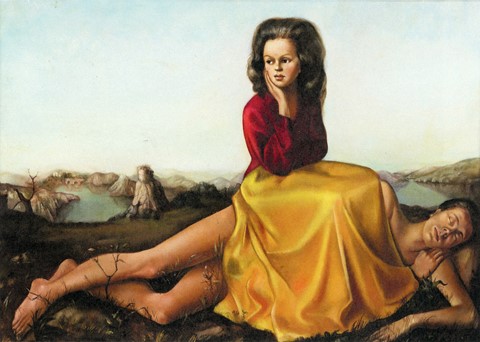
She’s an AnOther Woman Because…
Salvador Dalí once dismissively said of Fini that she was “better than most, perhaps. But talent is in the balls.” Like many other great painters and writers of the age, she was all too often overlooked because she was a woman – one, moreover, intensely interested in exploring sexuality, desire, femininity and what it means to look and be looked at. Even after her death in 1996, male critics still registered ambivalence – George Melly’s obituary for The Independent describing her erotic drawings as all too pretty, damning her with the faint praise of “de Sade for Vogue”.
Luckily Fini’s prodigious output is now being appreciated anew – as is her drive and daring in establishing a life for herself that consistently challenged the status quo. From her gorgeous, unsettling paintings to her keen interest in both exploring and exploiting her visual potential, Leonor Fini’s legacy is a glittering, multifaceted one – theatrical to the very end.
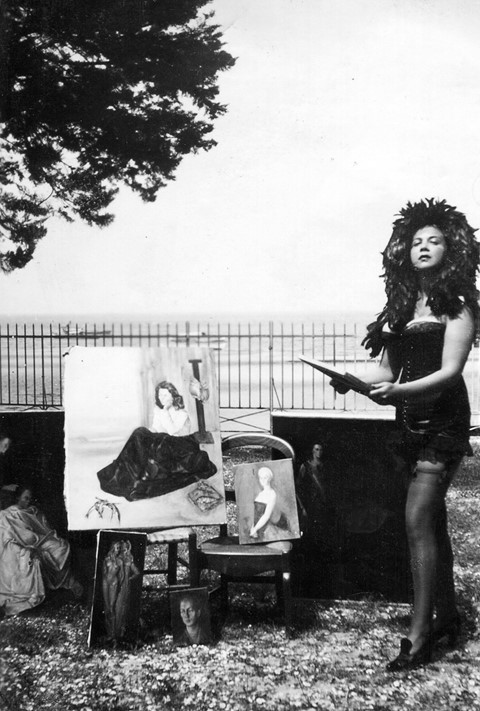
Leonor Fini: Theatre of Desire, 1930–1990 is at the Museum of Sex, New York, until March 4, 2019.
